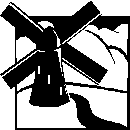


FAMOUS DUTCH PHILOSOPHERS
As a philosopher, Dryver insisted that he was a Philosopher of Art, and something of a neo-linguist. Here he addresses the acquisitions committee for the Jarmeer Museum at the unveiling of the newly purchased "Grecco Summer" by the 13th century Italian painter D'Etassimo:
"Art is not the paint on the brush, not the brush which puts the paint on the canvas, not the canvas, not the frame, not the picture of Icarus falling out of the sky behind the ship. Sometimes it's the house it hangs in, often it is the museum. Art used to be Van Gogh's ear, Da Vinci's halitosis, Picasso's sexism, Monet's virginity. But now it's the people who buy a Rolio for three million, eschew the pointilistic existentialism of Degubria for the smeared nihilism of Otto Von Duric, throw away their Rossi-Stremechs when they find out it was his student who finished the later canvas of his green period, then buy them back again when it's discovered that the student influenced Bartov. Art these days is the souls of the ladies and gentleman invested in every viewing, every showing, every theft and recovery, every cloistered copy. The artist these days wears no smock, buys no oils, eats no paint in a fit of pique over the frustration of living in a world that worships baseball over Marcus Festalian. It's the papers I write, the conferences I give, the number of times I've pointed out the the Societé de Technologie that Rembrandt had less to do with the mysteries of shadow and light and more to do with the profundity of a linear ontology. It's the way that same Societé rejects my application every quarter to become a member of their Philosopher's group simply because I am neither an agnostic nor a Jew! It may be that we will see a revival of the Greek ideal, a neo-neoclassicism if you will, and art will once again be the shape of the curve, the force of the line, the boldness of the stroke and the subtlety of the shade. It may once again be the allegory, the passion. But for now, and for a while I think, it's going to be the glass of wine the young couple sips pretentiously as they try to look as if they know what they are seeing, because they want to want to know."



Previous Philosopher
Translate this page into:
|
| Back to Bukkhead |
| Back to th'other index |